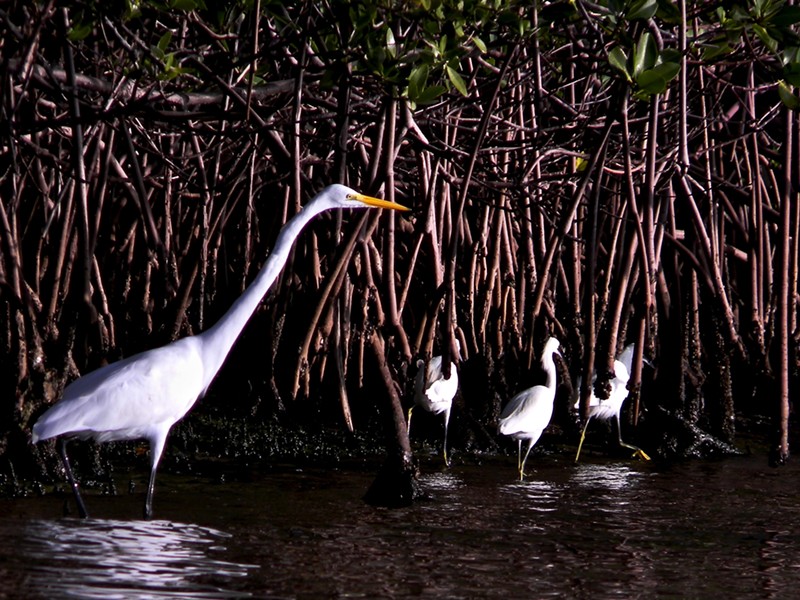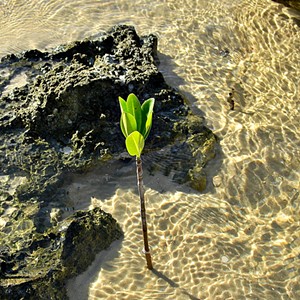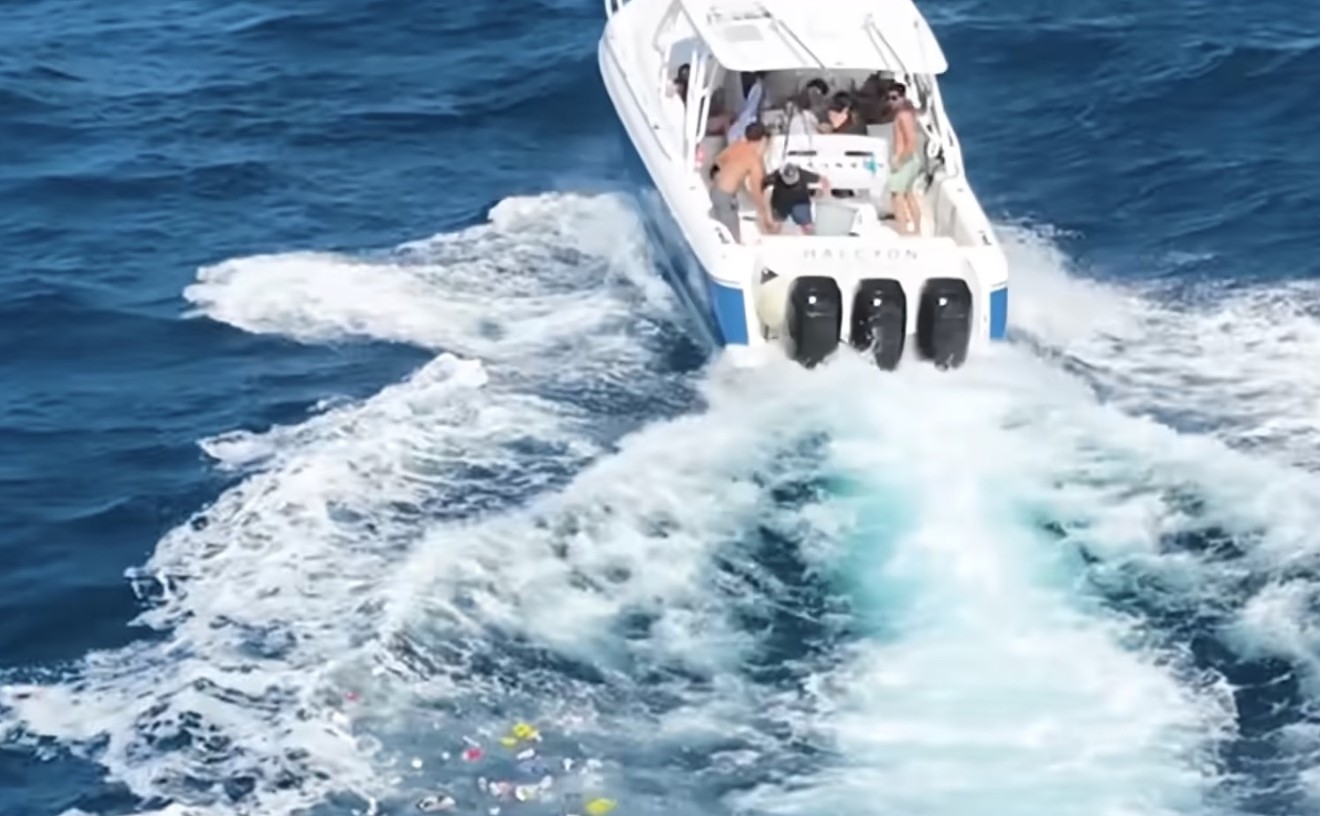Florida's mangroves play a key role in the health of the state’s coastal ecosystems, serving as nurseries for marine animals and providing a first line of defense against coastal erosion and storm surge.
Around Biscayne Bay, the aquatic plant has been losing ground over the years as a result of urban expansion. Mangrove forests were viewed as a nuisance and targeted for mass elimination during development booms of decades past, leaving a small fraction of the habitats that once lined Miami's waterways. Though mangrove loss has since slowed, Hurricane Irma and other powerful storms have dealt a blow to regrowth of the forests.
For the second year in a row, State Senator Ileana Garcia is seeking to buff up Florida’s mangrove law in an effort to revitalize the plant's presence statewide. She recently introduced SB 100, a bill that would bolster mangrove conservation through the Florida Department of Environmental Protection.
The current version of the statute regulates trimming, removal, and alteration of mangroves in Florida.
Garcia is asking to take it a step further – her bill outlines specific rules to encourage replanting and restoration of mangroves.
The slimmer version of the amendment proposed by Garcia last year was referred to the Environment and Natural Resources committee but was indefinitely postponed and withdrawn from consideration. This year’s effort has been referred to three senate committees and has yet to be comprehensively reviewed.
"There was not enough time last year to move the bill,” Garcia tells New Times. “However, this year I learned from environmental experts and staff... I hope that there will be enthusiasm for this bill from the environmental community."
If passed, the bill would require the Florida Department of Environmental Protection to identify vulnerable coastal properties and areas of significant erosion while encouraging local government partnerships to create mangrove restoration programs.
The legislation would direct the department to protect barrier and spoil islands, assist in Everglades restoration, and participate in Biscayne Bay revitalization efforts, including the drafting of "living shoreline design options" for the Biscayne Bay Aquatic Preserve.
It also includes a provision for an educational program to raise awareness about mangrove conservation.
The benefits the plants provide to Florida's aquatic ecosystems are indispensable, says Edward Castañeda, a marine researcher at Florida International University’s Institute of Environment.
“We are experiencing climate change, sea-level rise that in the past decade has increased drastically here in South Florida,” says Castañeda, who specializes in mangrove research. “We have a high frequency recurrence of tropical cycles. Mangroves are the first line of defense against these storms.”
Mangroves prevent coastal erosion by stabilizing shorelines with their roots. They filter pollutants from the water, improving the quality and clarity of water flowing through estuaries. And they create a habitat for juvenile marine life that is not only critical to marine biodiversity but also ensures a future for Florida's recreational fishing grounds.
Countless species rely on the habitats, including the Florida manatee, small-toothed sawfish, goliath grouper, bottlenose dolphin, Lower Keys striped mud turtle, key deer, American crocodile, bald eagle, osprey, brown pelican, and mangrove cuckoo, according to Audubon of Florida.
Castañeda says the bill would help reinforce mangroves' role in protecting Florida’s coastal ecosystems. But he notes that it’s broadly worded on the actions needed for restoration programs to be successful.
“Just by planting mangroves and then leaving, you don’t know the success of these restoration programs,” Castañeda says. “You need monitoring projects. That way you can establish performance measures. It’s important to create data.”
The FIU professor says funding for research is crucial in mapping the trajectory of environmental recovery in South Florida. He appreciates that the bill is promoting public awareness and supporting mangrove education campaigns.
“A lot of people don’t know the value of mangroves,” Castañeda said. “By conserving and protecting and creating this awareness to the public, this incentivizes academic programs for teaching and training the next generation of coastal ecologists.”
Garcia says she is also planning to introduce legislation to address the need for investment in coral reef revitalization efforts, “which will provide similar benefits to our environment and help protect coastal communities around the state.”
Mangrove coverage around the Miami area, once estimated to exceed 46,000 acres countywide, has been decimated by urban development. By the early 1970s, mangrove coverage in the county had been reduced to roughly 10,500 acres, according to an archived Biscayne Bay Aquatic Preserve management plan.
One study estimated that more than half of the mangrove forests in the Florida Keys were eliminated prior to 1991, largely as a result of dredging and refilling operations for the development of subdivisions.
[
{
"name": "Air - MediumRectangle - Inline Content - Mobile Display Size",
"component": "19274298",
"insertPoint": "2",
"requiredCountToDisplay": "2"
},{
"name": "Editor Picks",
"component": "17482312",
"insertPoint": "4",
"requiredCountToDisplay": "1"
},{
"name": "Inline Links",
"component": "18711090",
"insertPoint": "8th",
"startingPoint": 8,
"requiredCountToDisplay": "7",
"maxInsertions": 25
},{
"name": "Air - MediumRectangle - Combo - Inline Content",
"component": "17482310",
"insertPoint": "8th",
"startingPoint": 8,
"requiredCountToDisplay": "7",
"maxInsertions": 25
},{
"name": "Inline Links",
"component": "18711090",
"insertPoint": "8th",
"startingPoint": 12,
"requiredCountToDisplay": "11",
"maxInsertions": 25
},{
"name": "Air - Leaderboard Tower - Combo - Inline Content",
"component": "17482313",
"insertPoint": "8th",
"startingPoint": 12,
"requiredCountToDisplay": "11",
"maxInsertions": 25
}
]














